Continuing now with the discussion of my pre-GSA meeting field trip to examine the structural geology of the Quetico-Wabigoon subprovince boundary within the Superior Craton of southern Ontario, Canada. Our penultimate stop on the second day of the trip was a roadcut exposing the gabbro of the Grassy Portage Sill. This is what it looks like:
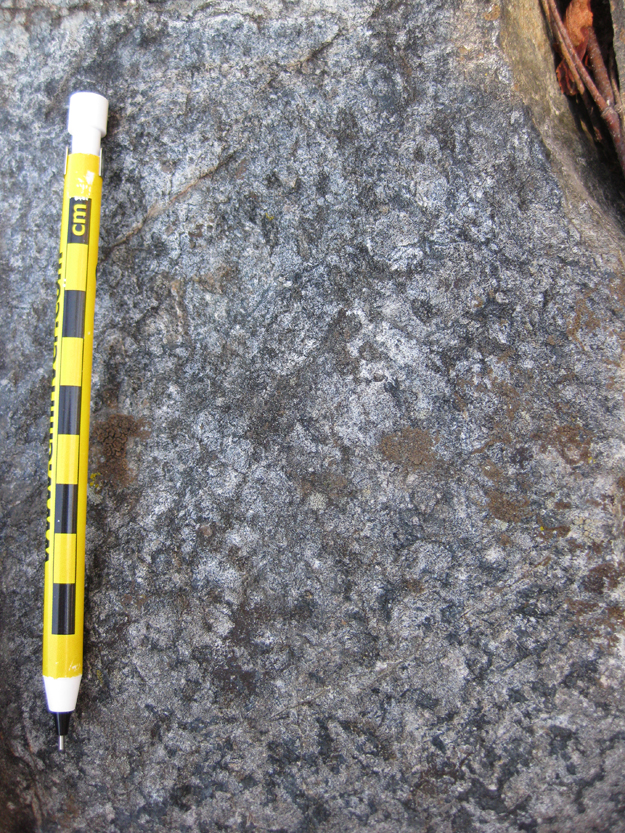
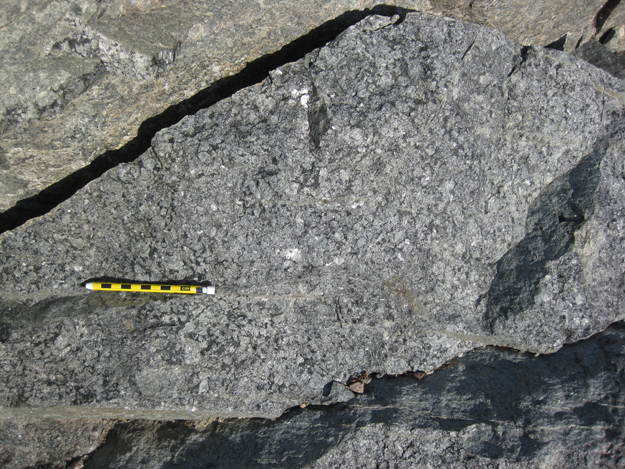
…Except where it doesn’t. In places, it looks like this, instead:
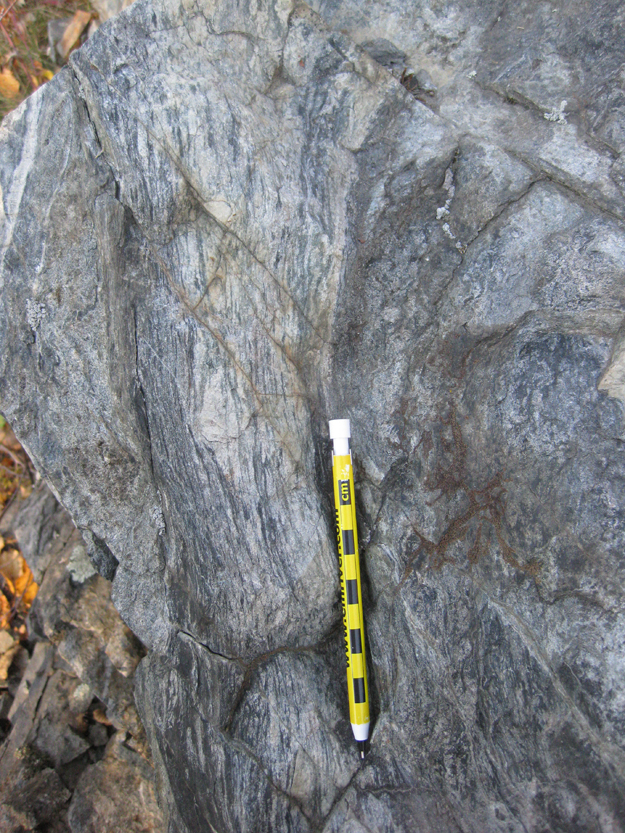
Zooming in a little bit closer to see this transposition foliation:
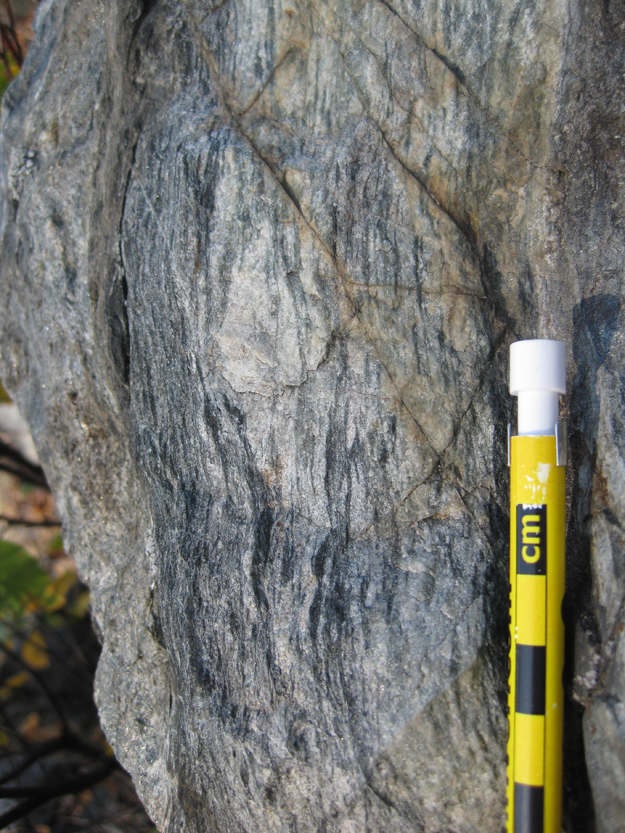
You’re looking there at a “shear band” (or “shear zone,” or “high strain zone,” depending on your preferred terminology): a ductile version of a fault, where two blocks of relatively undeformed rock move past one another, but instead of a fracture separating them, there is a tabular zone of more-strained rock. The rock along the “shear zone” has been “sheared out” into a smaller grain size (mylonitization) and had its grains arranged into a distinctive rock fabric (usually defined by a foliation, sometimes accompanied by a lineation). Sometimes the foliation is really pronounced; sometimes it’s more subtle. There are examples of both (as well as undeformed gabbro) in the next image:
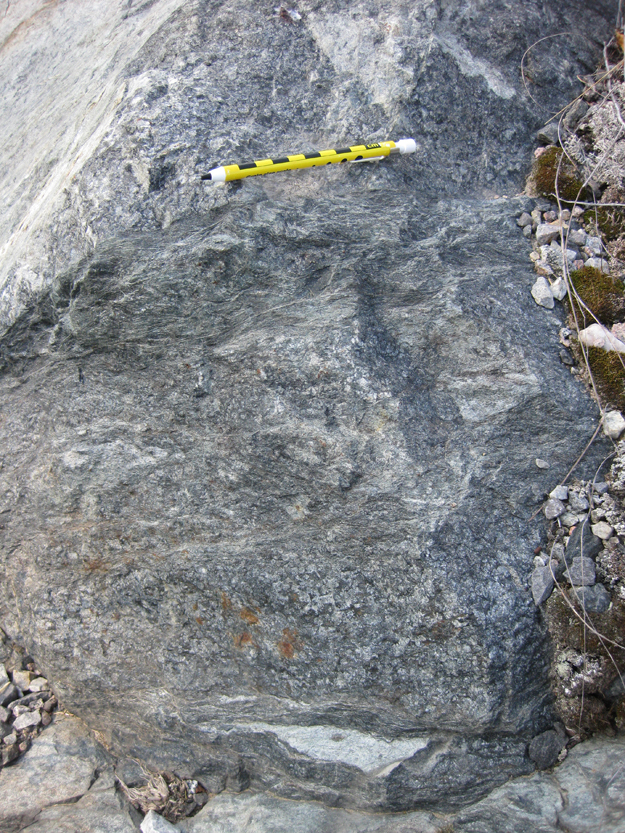
Sometimes the shear zone is narrow, sometimes it’s quite wide. Sometimes the boundary between the shear zone and the host rock is gradational, and sometimes it’s very crisp and abrupt:

Here’s a couple of examples with nice textural highlighting courtesy of the late afternoon sunshine:
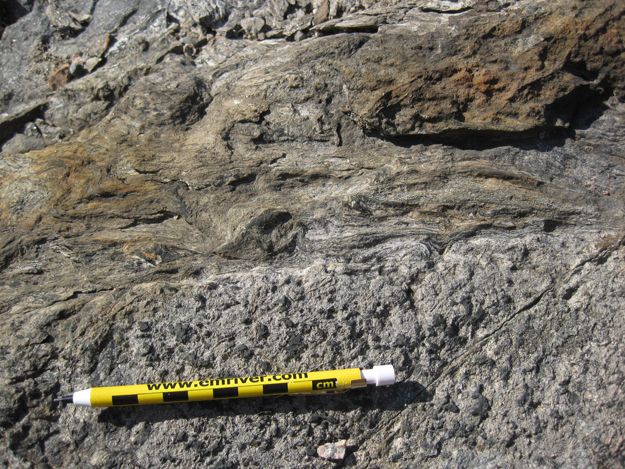
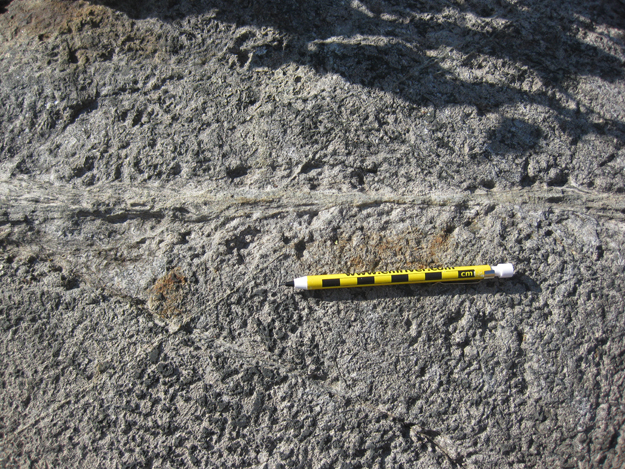
Nice left-lateral (“sinistral”) kinematics on display in this one:
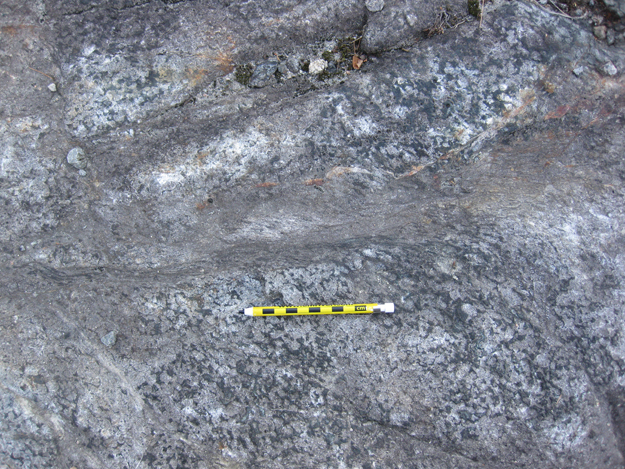
A similar case here (note the “S” and “C” orientations to the foliation – foliation in its original position, and the transposed version thereof):

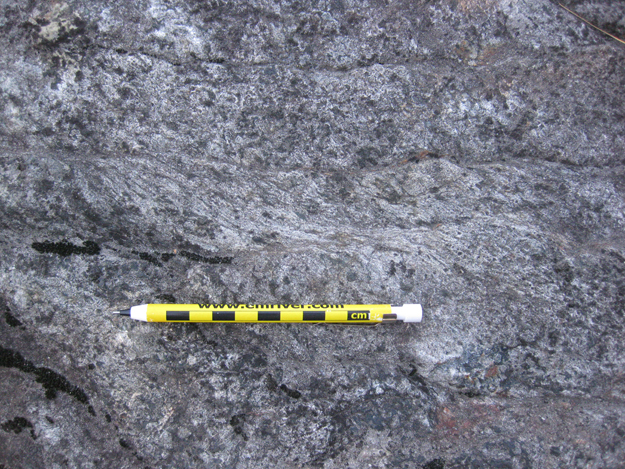
This one shows dextral (top to the right) kinematics, instead. If you’re new to structural geology and interpreting motion directions (“kinematics”) from structures, just compare the previous image and this one: here, the foliation “tips over” to the right instead of the left:
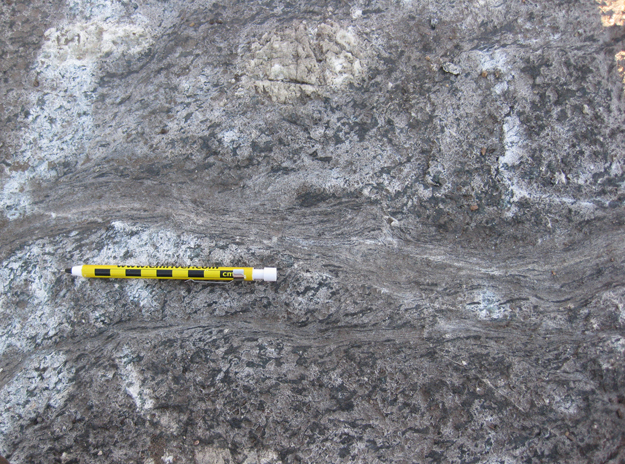
These next two examples are my favorite outcrops I saw there:
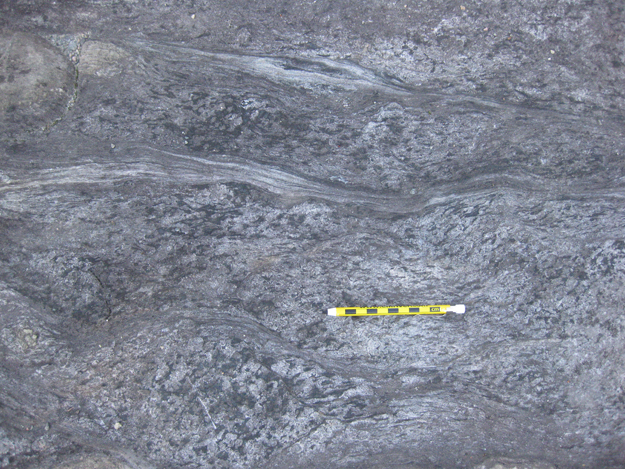
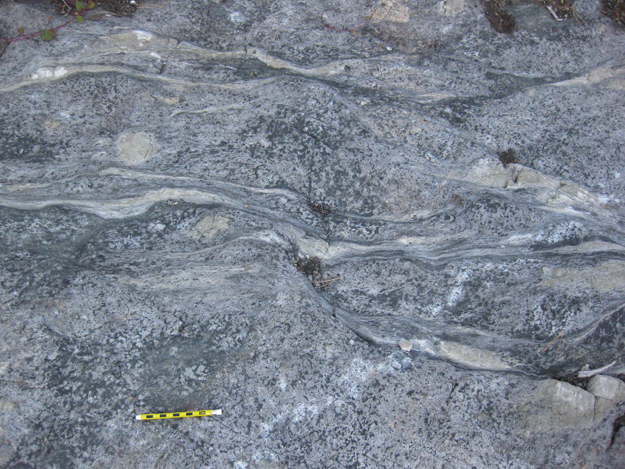
One thing I love about those previous two images is the profusion of shear bands in that particular swatch of gabbro, but I also appreciate the overall anastamosing (“braided”) pattern to the shear bands – they split and merge and wend and waft their way across the gabbro as it smears out.
Okay: time to test yourself. Is the next photo showing dextral or sinistral kinematics?
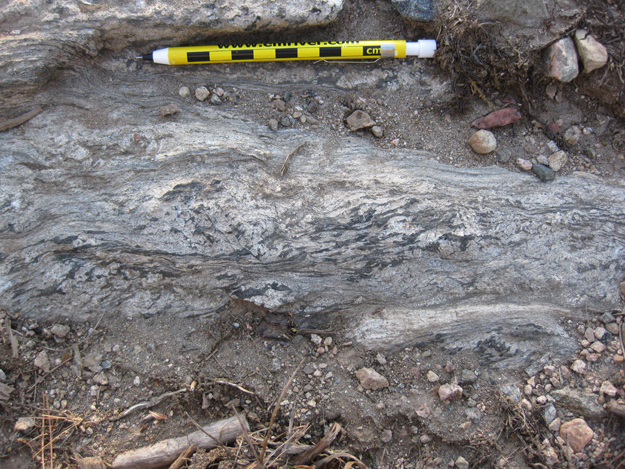
If you said “dextral” (top to the right), you’re right. Your prize is that you get to keep reading this blog post…
If you zoom out a bit from that previous image, you can see it’s set amid zones are far more equigranular (less deformed) gabbro, but that other sub-parallel shear bands are close at hand:
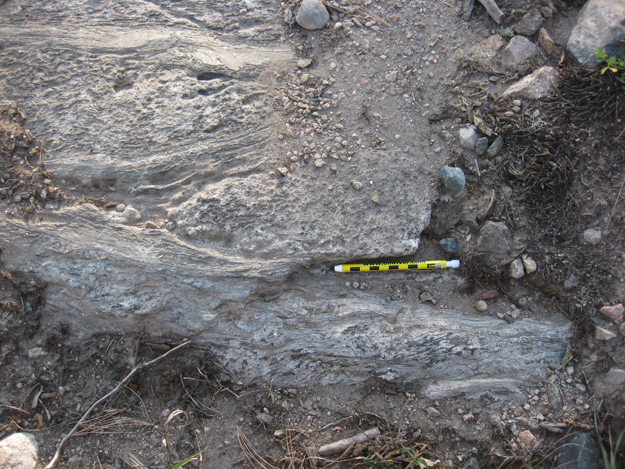
A few more lovely shear bands, to close things up for this post:
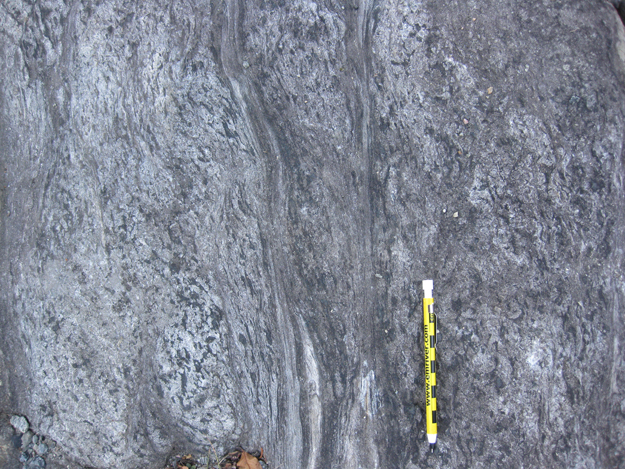

Have a superb Thursday. Hopefully it’s not too stressful…

0 thoughts on “Shear bands in the Grassy Portage Sill”